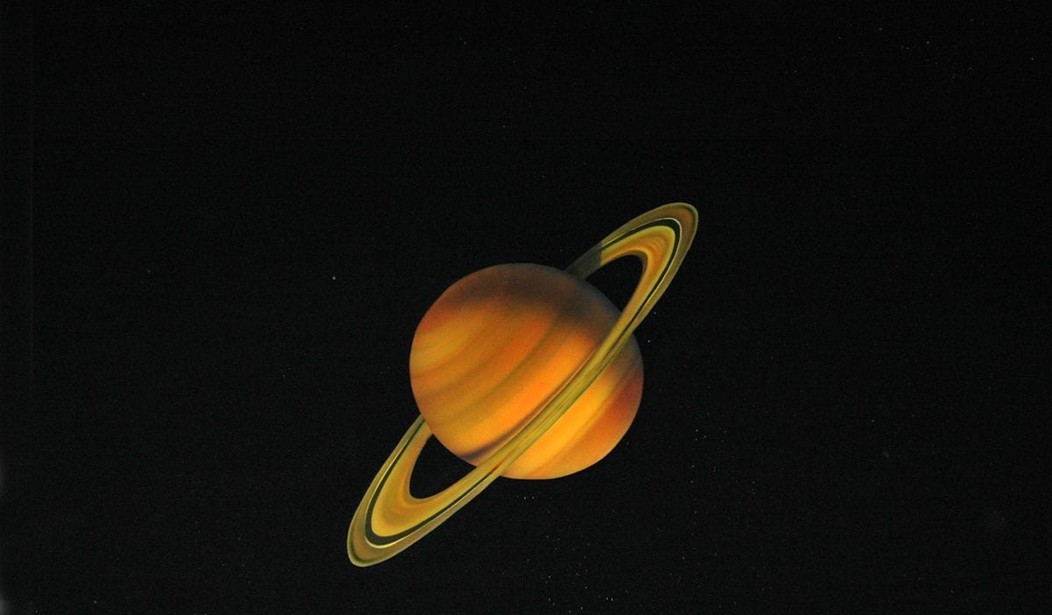Forty years ago, NASA launched the two Voyager spacecraft toward the outer planets of Jupiter, Saturn, Uranus, and Neptune. It was called “The Grand Tour” of the solar system and it became the most ambitious NASA mission ever attempted.
Only once every 175 years do the outer planets line up just the right way for a probe launched from earth to visit all of them. The Voyagers employed an ingenious “slingshot” trajectory — using the gravity of the planets to accelerate the spacecrafts toward the next target. It worked to perfection.
NASA is celebrating the achievements of the two spacecraft all week, recalling the heady days when the first closeup pictures of the outer planets were beamed to earth. The images shocked, amazed, and delighted scientists, as the information sent by the Voyagers literally revolutionized our understanding of the planets.
The identical spacecraft, Voyager 1 and Voyager 2, took off in August and September 40 years ago and were programmed to pass by Jupiter and Saturn on different paths. Voyager 2 went on to visit Uranus and Neptune, completing NASA’s “Grand Tour of the Solar System,” perhaps the most exhilarating interplanetary mission ever flown.
University of Colorado Boulder scientists, who designed and built identical instruments for Voyager 1 and Voyager 2, were as stunned as anyone when the spacecraft began sending back data to Earth.
The discoveries dazzled scientists and the public: Twenty-three new planetary moons at Jupiter, Saturn, Uranus and Neptune; active volcanoes on Jupiter’s moon Io; Jupiter’s ring system; organic smog shrouding Saturn’s moon Titan; the braided, intertwined structure of Saturn’s rings; the solar system’s fastest winds (on Neptune, about 1,200 mph); and nitrogen geysers spewing from Neptune’s moon Triton.
“This was a really big deal,” said Professor Fran Bagenal of CU Boulder’s Laboratory for Atmospheric and Space Physics (LASP), a mission scientist who began working with Voyager data as a doctoral student at MIT. “The outer solar system went from being fuzzy planets with dots for moons to a whole set of new and amazing worlds.”
Forty years later, the two spacecraft are still traveling – about a million miles per day. Although both are still in contact with scientists at the Jet Propulsion Laboratory in Pasadena, California, which is managing the mission for NASA, Voyager 1 is roughly 13 billion miles away and has punched its way into interstellar space. Voyager 2 is not far behind, but on a different trajectory that will soon take it out of the cosmic neighborhood.
There were several spectacular, unexpected discoveries about Saturn’s rings, about the clouds of Neptune, the previously unseen ring of Jupiter. And most surprising of all, active volcanoes on Jupiter’s moon Io.
Considering the state of our knowledge about these planets at the time that Voyager was launched, it’s safe to say that we learned more about the outer planets from these two probes than the sum total of all previous knowledge about them in human history.
Most intriguingly, both spacecraft, now the first objects to leave the influence of the sun’s gravity and enter interstellar space, carry a gold record telling other beings about us:
On the off chance either spacecraft encounters a another civilization, each is carrying what are known as the “Golden Records” – gold-plated copper phonograph records with greetings in 54 languages; the sounds of surf, wind, thunder, birds and whales; analog photos of people and places on Earth; diagrams of DNA; and snippets of music ranging from Bach and Beethoven to Chuck Berry.
The spacecraft carries a stylus set up in the correct position so that aliens could immediately play the record, named “Murmurs from Earth” by the late Carl Sagan, who conceived the Golden Record effort.
While not likely to be found by aliens, Dr. Sagan believed that including the records on the spacecraft said more about us as a species than anything else.










Join the conversation as a VIP Member